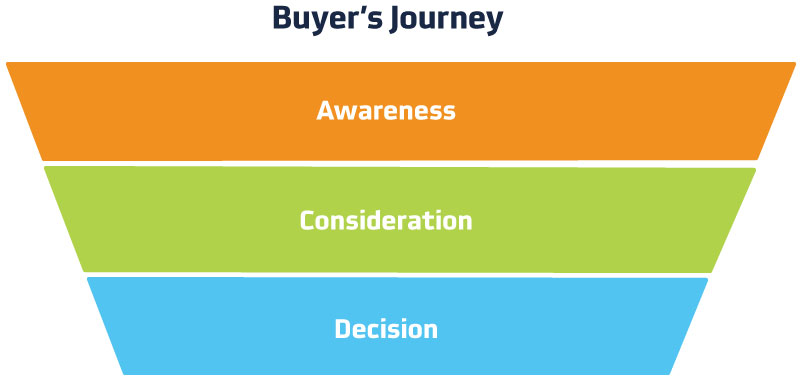Inbound marketing is a customer-centric methodology that attracts visitors and converts them into leads — which leads to growth!
We’re all looking for ways to grow our businesses, and we all know that marketing needs to be a part of the equation. But when was the last time you evaluated your marketing efforts and made sure they're reaching your target audience in a relevant, compelling, and effective way?
This may be a good time to pause for a moment and think about it.
Before you can evaluate any strategy, campaign efforts, or money spent, you have to have goals, KPIs, and benchmarks in place. You can't determine whether or not your marketing efforts have moved the needle or met your goals without these things.
Goal setting may seem logical, but all too often people don't approach marketing this way. Gone are the days of not being able to measure marketing ROI. Today, we have many healthy, data-driven ways to measure marketing success.
That's one reason we love inbound marketing (and HubSpot — inbound's premier marketing platform). It focuses on creating quality content that draws people to your company and ultimately to your product or service because it meets their need. And because analytics and reporting are at the core of inbound marketing, it can produce cold, hard data that will reveal whether or not your marketing is producing results, and it can provide conclusive numbers that you can compare to your goals.
Whether you're looking for a way to improve your marketing or for ways to do marketing better, this post is a great place to start when looking for inbound marketing tips and strategies to jump-start your traffic and earn qualified leads.
Instead of eating the whole elephant in one impossible bite, let's break it down into manageable bite-size pieces — in this case, four.
Try These Four Inbound Marketing Tips to Grow Your Business.
1. Create content — and make sure it's great.
Create valuable content on a regular basis — it will help your SEO, and it will be useful to people who want or need what you're offering.
New content can include —
- Updating website pages with new or updated information
- Creating a spotlight ad on your homepage
- Publishing a new blog post
- Publishing a content offer like an e-book, white paper, or checklist
As long as it includes valuable (not spammy!) content, you’ll be in good shape.
2. Make sure your website is functional and user-friendly.
Although you may want your customers to see everything you have to offer; they only want to find what they want. So, make the process as easy as possible by providing the information they need without excessive advertising.
From the second a user interacts with your site, that individual begins evaluating your brand. Now consider this: how many other sites are your users interacting with on a daily basis?
It’s likely they are visiting plenty of other sites and, solely based on their interactions, many users will determine the value of what your site has to offer them. Not only this, but these interactions are also the basis by which users have created their mental models.
3. Optimize your website.
SEO (search engine optimization) is essential. When your website is optimized for search, it has a better chance of cutting through the clutter and becoming visible to those who are searching for your product on Google.
The easier it is for people to find you on a search engine, the more traffic you'll get to your site — and the more traffic you get, the better your chances of generating leads and landing sales.
- Develop a meaningful site structure
- Discover and implement critical keywords
- Write solid meta descriptions for each webpage
- Create descriptive image alt tags
- Get authoritative sites to link to your site (link building)
4. Create a lead nurturing plan.
Once someone shows interest in your company or product, what do you do? You should have a plan in place that will nurture leads through the buyer's journey.

If a person shows interest in your company, products, or services by following you on Facebook, filling out a form on your website to download a content offer, or sending a message through a website chat, what's your plan of action?
No matter how people reach out, be sure to follow up. Be proactive, but don’t be overbearing. Whether responding via a social media platform or sending a follow-up email — or any other way — make sure your message is personalized.
Depending on where they are in the journey, you may want to emphasizes your product’s value, up-sell, offer an idea or insight, or provide a clear next step or CTA.
Need Help Improving Your Inbound Marketing so that Your Business Can Grow?
Ready to ramp up your marketing? There’s no time like the present! Take a moment to create your marketing goals. Here's a SMART Marketing Goals template that can help you through the process. If you need help implementing your marketing goals (we’re all limited in some capacity, right?), contact us. Together we'll discover if inbound marketing is a good fit for you.
Subscribe to Our Blog
Stay up to date with the latest marketing, sales, and service tips.




